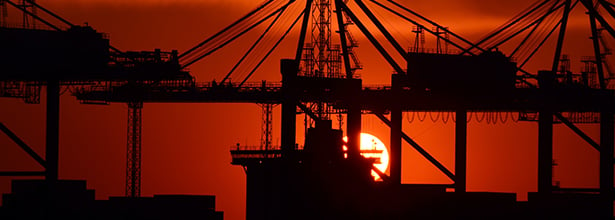
Perhaps one of the biggest issues to rise to prominence in the opening years of the 21st Century has been ‘sustainability’. The growing concern with the environment, in particular the possibility of climate change through global warming, has led to a focus on how human and economic activity has the potential to adversely impact the long-term sustainability of the planet.
Because the supply chain underpins the efficient and effective running of the business it can provide a useful framework for exploring opportunities for enhancing sustainability. We need to understand the impact on sustainability and resource depletion of everything we do from product design to end-of-life disposal.
Beyond the Carbon Footprint
Whilst there is an understandable concern that the supply chain’s carbon footprint should be minimised, it must also be recognised that supply chain decisions have a wider impact on resources generally. It is important to recognise the effect of economic activity on the use of scarce resources across the supply chain as a whole. Decisions that are taken at every stage in a company’s value chain can have significant implications for resource requirements and for the wider environment. Some examples of the resource implications of supply chain decisions are:
1. Design
It is suggested that the supply chain ‘begins on the drawing board’. This is particularly true when considering the supply chain’s ‘resource footprint’. If managers responsible for new product development are not aware of the resource implications of their design decisions, this may lead to the launch of products with a bigger than desirable resource footprint.
2. Source
‘Sustainable sourcing’ is emerging as a fundamental element of best practice procurement. One reason for this is that it is estimated that for a manufacturer somewhere between 40% and 60% of their total carbon footprint lies upstream of their operations, for retailers it can be as high as 80%. Depending on where and how those upstream materials and products are sourced and made, there can be major differences in resource consumption.
3. Make
Manufacturing processes impact the resource footprint primarily through their use of energy, their relative efficiency and the creation and disposal of waste and toxic materials/effluents. In this age of out-sourcing and offshore manufacturing it may not always be apparent to the customer what impact manufacturing decisions can have on supply chain sustainability. However, it is evident that there are big differences in the energy efficiency of different factories and also in the waste they generate and how they dispose of it. Even the source of energy has sustainability implications.
4. Deliver
Clearly decisions on the mode of transport will affect the carbon footprint of a supply chain as will the extent to which transport capacity is efficiently used. However, the nature of the delivery network (i.e. the number, location and design of distribution centres, the use of hub and spoke arrangements, the extent of cross-docking etc.) can have a wider impact on supply chain sustainability.
Many companies have used network optimisation models to help determine the shape of their distribution arrangements. However, these models tend to optimise on a narrow definition of cost rather than taking into account the wider resource footprint that is created by the network. A new generation of network optimisation tools is now emerging which take account of the carbon footprint as well as the more conventional costs.
5. Return
‘Reverse Logistics’ is the term usually used to describe the process of bringing products back, normally at the end-of-life, but also for recall and repair. In the past, little attention was paid to the challenge of reverse logistics, often resulting in extremely high costs being incurred. Now, partly driven by increasingly stringent regulations – particularly on product disposal and re-use/re-cycling requirements – the issue has moved much higher up the agenda.
Essentially the challenge today is to create ‘closed-loop’ supply chains that will enable a much higher level of re-use and re-cycling. Clearly products must be designed with their end-of-life in mind, but also the logistics network employed must minimise the use of resources. Reverse logistics provides a major opportunity for companies to impact both their costs and their carbon footprint and should be viewed as an opportunity rather than a threat.
Our work in this area at Cranfield is one of the areas explored within the Leading Procurement Strategy Programme and Supply Chain Management Programme - two of our specialist programmes designed to develop appropriate skills for next generation professionals in these fields.
Blog produced by: Professor Martin Christopher, Emeritus Professor for Supply Chain Management and Logistics, Cranfield School of Management.
Read more:
- Procurement needs new skills for the VUCA age
- Securing the Success of Strategic Supply Chain Initiatives Today and Tomorrow
- Four Things That Should Be On Every Supply Chain Leaders "To Do List"
- Creating An Agile Supply Chain
- Advance your career: How to go from middle weight to heavy weight in 2019



